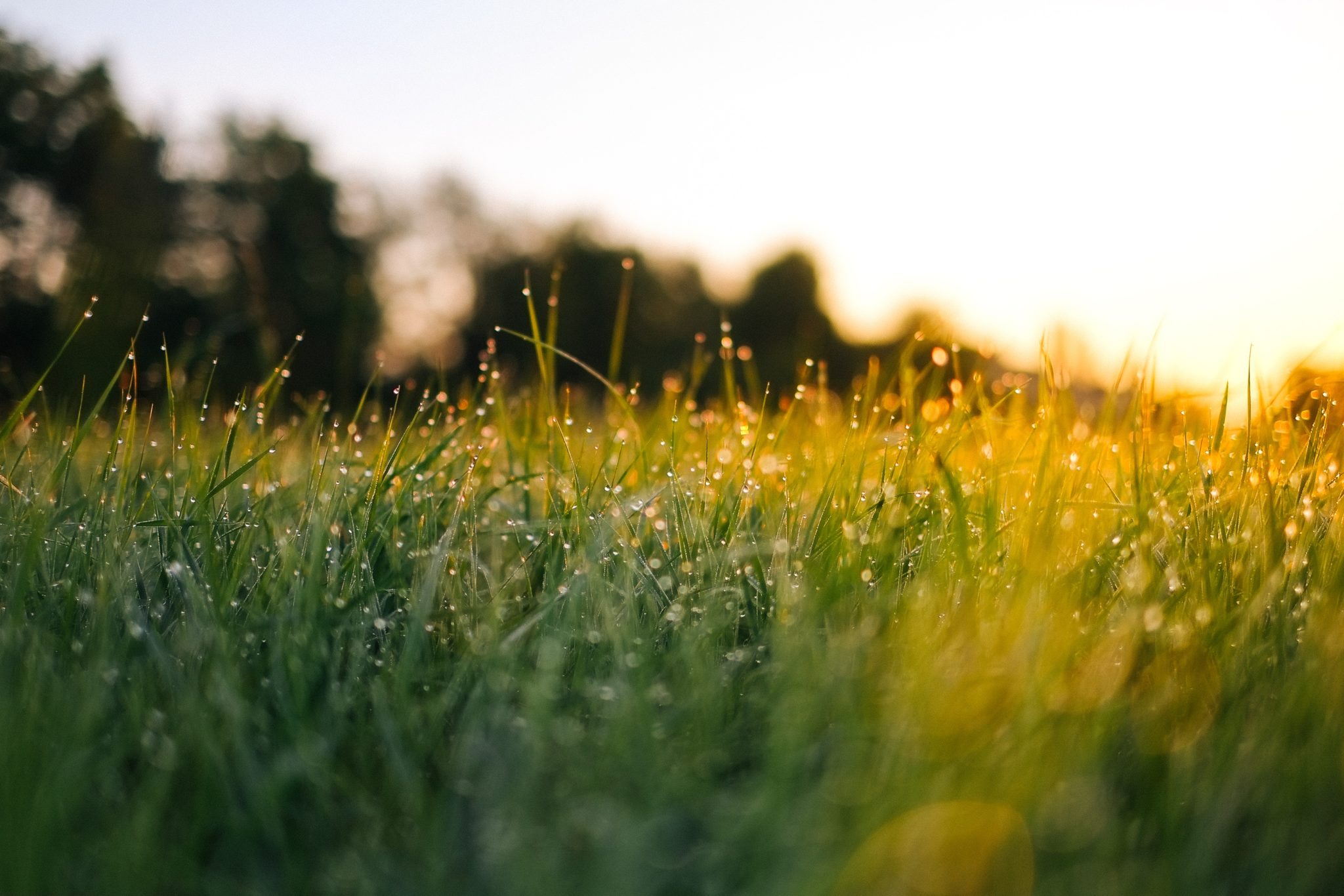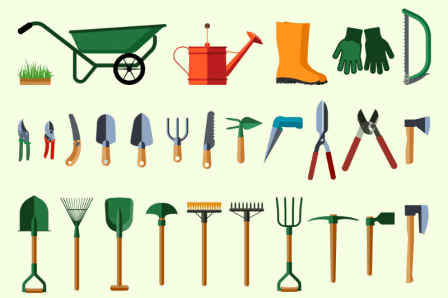The Landscape Alert is an email newsletter sent to the Georgia landscape and turf industry providing UGA information regarding industry issues.
These issues include emerging pests, regulatory changes, upcoming training, and new information, or technologies for the industry. Coordinated by the Center, the newsletter is a collaboration of several UGA departments – Horticulture, Entomology, Plant Pathology, Crop and Soil Science, and the Warnell School of Forestry.
Readers use the information contained in the Alerts for staff training, remaining current on upcoming issues, scouting for and identifying pests, evaluating current pest control practices and improving workplace safety. Alerts help maintain communications between state and county Extension staff, researchers, the industry, and industry associations. Alerts also serve as an educational tool for County Extension Agents.
Landscape Alerts are currently sent to more than 1700 readers and feedback has been very good. In a recent survey, of those responding, 93% stated they learned something they plan to use.
For more information email ghuber@uga.edu.
Latest Landscape Alerts
Landscape Alerts & Updates | September 2019
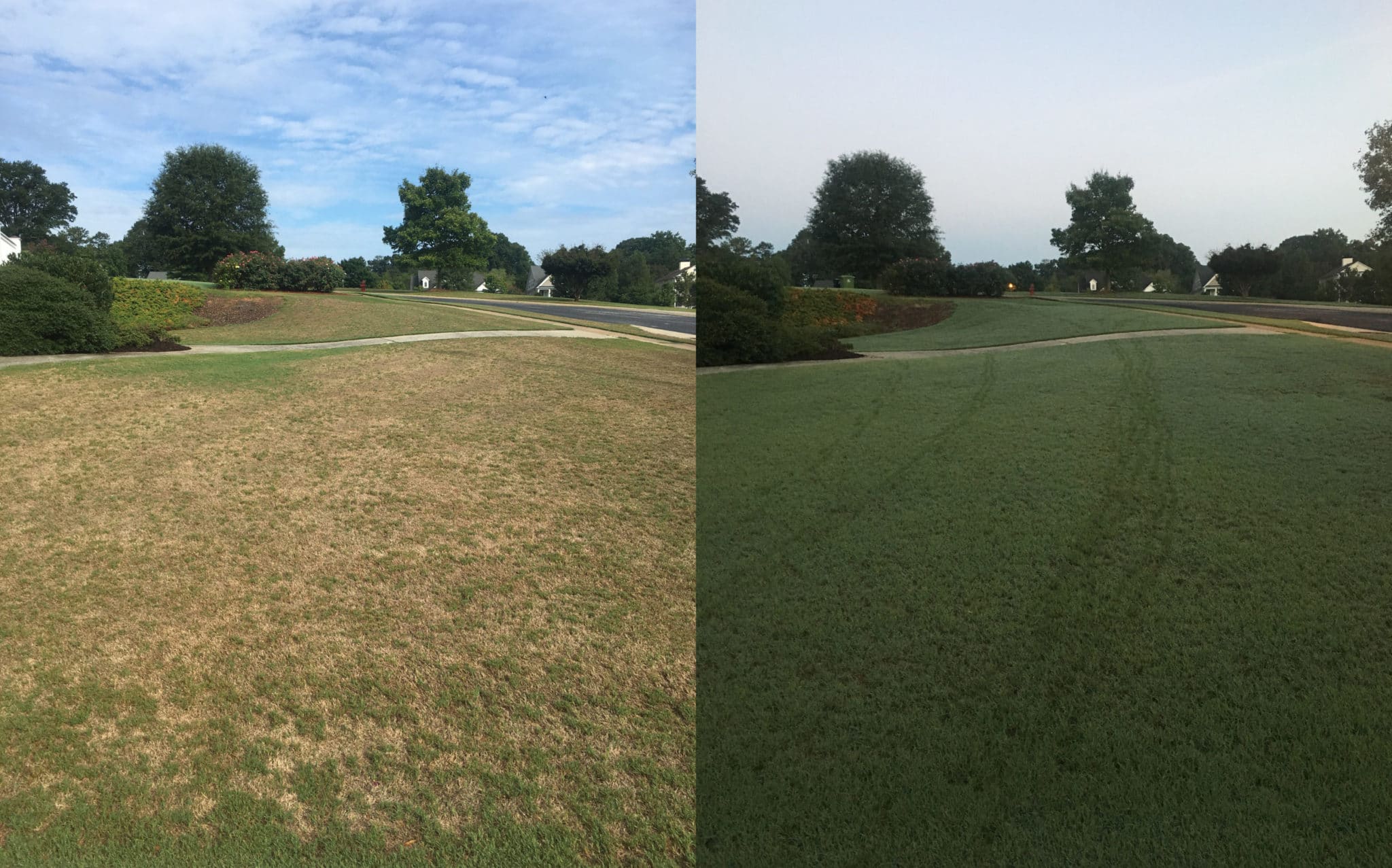
Insufficient production and storage of photosynthates during the fall transition into dormancy can translate to issues during spring green-up. Drought stressed turfgrass in August 2016 (Left) was able to recover prior to dormancy following appreciable rainfall (Right). However, we are seeing drought-stressed turfgrass in September of 2019 and the dormancy transition is quickly approaching. Photo by Clint Waltz, UGA.
Tips for managing drought stressed turfgrass as dormancy approaches
by Clint Waltz
During periods of hot and dry weather, certain modifications to your lawn maintenance practices will help to carry your turfgrass through periods of inadequate rainfall and reduce losses. The height of the warm-season turfgrass growing season spans from May to October. Given average conditions (regular rainfall and moderate temperatures), bermudagrass, zoysiagrass, St. Augustinegrass, centipedegrass, and other warm-season species respond quickly to cultural and maintenance practices such as mowing, fertilizing, aerating, topdressing, and weed management. However, the summer of 2019 has delivered hot and dry weather with sporadic rainfall. With fall approaching, now is the time to adjust your turfgrass management program to promote a smooth transition into dormancy and green-up next spring.
From mid- through late-summer rainfall across Georgia has been variable with some areas receiving timely rain and other areas being droughty. Moisture stress in turfgrasses can be recognized in the early stages by a dull bluish-gray cast. Additionally, take note of footprints and tire tracks in the turf that do not seem to rebound. If you are in an area that has lacked rain, consider applying some irrigation to get the grass growing.
Dr. Clint Waltz, UGA Extension Turfgrass Specialist, suggests these tips for managing turfgrass as it transitions into dormancy:
- Raise the cutting height within the recommended mowing range
- Do not apply nitrogen containing fertilizers
- Modify herbicide programs during high temperatures and moisture stress
- Water deeply & infrequently
- Grasscycle
- Use water conserving and drought tolerant turfgrasses
Raise the Cutting Height
Turfgrass stress can be reduced by using a sharp mower blade and raising the cutting height by 1/2″ or to the tallest allowable height of the recommended mowing range during drought. A clean cut also reduces moisture loss through wounds and minimizes entry points for disease. Taller shoots promote deeper roots and a dense canopy can help to reduce ground surface temperatures and conserve moisture. Grasscycling (mulching clippings versus bagging) can also help to conserve moisture.
Avoid Nitrogen Applications
As grasses move into dormancy they need to “harden-off”. Nitrogen fertilization encourages new shoot growth which directs plant sugars, and other metabolites, away from storage organs (e.g. rhizomes, stolons, and crown). These storage organs and sugars provide the energy for the grass to green-up next spring. By allowing the plant to harden-off and accumulate sugars in the storage structures, the grass is better able to survive winter stresses and recover next year.
Modify Herbicide Programs During High Temperatures and Drought
Many herbicides act upon plant growth processes and can be less effective during periods of drought when weeds are not actively growing. In addition, certain herbicides may cause damage to drought-stressed turf or non-target landscape plants due to volatilization and drift during high temperatures. Review your pesticide labels for specific information regarding temperature requirements, watering requirements, and proper application.
Water Deeply and Infrequently
The optimum watering schedule can be roughly determined by observing the number of days that pass between signs of moisture stress. Apply sufficient water to saturate the root zone to a depth of 6-8 inches. Clay soils and sloped areas may require staggered watering intervals to allow time for water infiltration between cycles and prevent runoff. Irrigating in early morning conserves water by reducing evaporation and drift. A good practice is to align watering schedules with drought management rules so that in the event of a declared drought, the appropriate watering program is already in place. The 2010 Water Stewardship Act permits lawn watering between the hours of 4:00pm and 10:00am.
Use Water Conserving and Drought Tolerant Turfgrass Cultivars
The University of Georgia Turfgrass breeding programs continue to make excellent strides in developing improved cultivars with low water use and high drought tolerance. For new installations or where turfgrass replacement is needed, look for improved cultivars such as TifTuf bermudagrass. Visit www.GeorgiaTurf.com for more information on selecting turfgrasses.
Landscape Alerts & Updates | June 2019
Photo by Clint Waltz, UGA.
Nostoc Algae in Turfgrass
Guest post by Clint Waltz, Ph.D., University of Georgia Turfgrass Specialist.
(Turfgrass Blog #4: 2019 Edition, June 10, 2019)
With the recent dry weather encouraging the use, and possible overuse, of irrigation systems then the recent tropical conditions – rainfall and humidity – I have had several pictures and questions about a jelly-like substance growing in the turf. The jelly-like “stuff” is a Nostoc algae,a genus of cyanobacterium formerly classified as blue-green algae. It has multiple common names like star jelly, witch’s butter, and others.
Under warm temperatures Nostoc may appear suddenly in lawns, and other turf areas, following a period of rain and can be an indication of overwatering. In turf, it is generally on a site where the grass is growing poorly due to severe compaction, overwatering, or both. It does not cause turf decline or death; it colonizes areas where it has favorable growing conditions and the grass was already thin. Poor drainage and compacted soils create a favorable environment for Nostoc. It will dry-out if the water or rainfall diminishes but it has only gone into dormancy. With enough moisture, it will come back to “life”.
In its hydrated, gelatinous, green state it can be a safety hazard. It is slippery. Be careful walking on it. However, when it dries-out it can become restrictive to turfgrass growth. Nostoc dries into a black crust that can prevent stolons from rooting, or “tacking”, into the soil, delaying turfgrass growth and spread.
Nostoc can be difficult to control. To discourage its growth, encourage the growth of the grass. Algae is less of an issue with an actively growing turfgrass canopy. The first step is to check the irrigation system to make sure it is watering properly (i.e. not too regular or too much). The turfgrass species we grow in Georgia perform better when grown on the slightly dry side, so scaling back the irrigation and adjusting the irrigation schedule will benefit the grass and can discourage the algae.
Improve internal soil and surface drainage. Core aeration opens the soil, allows oxygen into the root system, and reduces compaction. While allowing the soil surface to dry-out then breaking up the Nostic “crust” by scarifying the upper ¼- to ½-inch can break the algae into pieces and encourage its spread, it also permits the turfgrass stolons to root into thin areas and outcompete the Nostoc. With proper irrigation and core aerification the grass can cover and eventually predominate the area where the Nostoc was present.
For more information on Nostoc Algae, contact your local UGA Extension Agent at 1-800-ASK-UGA1, or click below to find your local office information.
Controlling Moss and Algae in Turf, UGA Extension Circular #823.
https://extension.uga.edu/publications/detail.html?number=C823&title=Controlling%20Moss%20and%20Algae%20in%20Turf
Landscape Alerts and Updates | April 2019
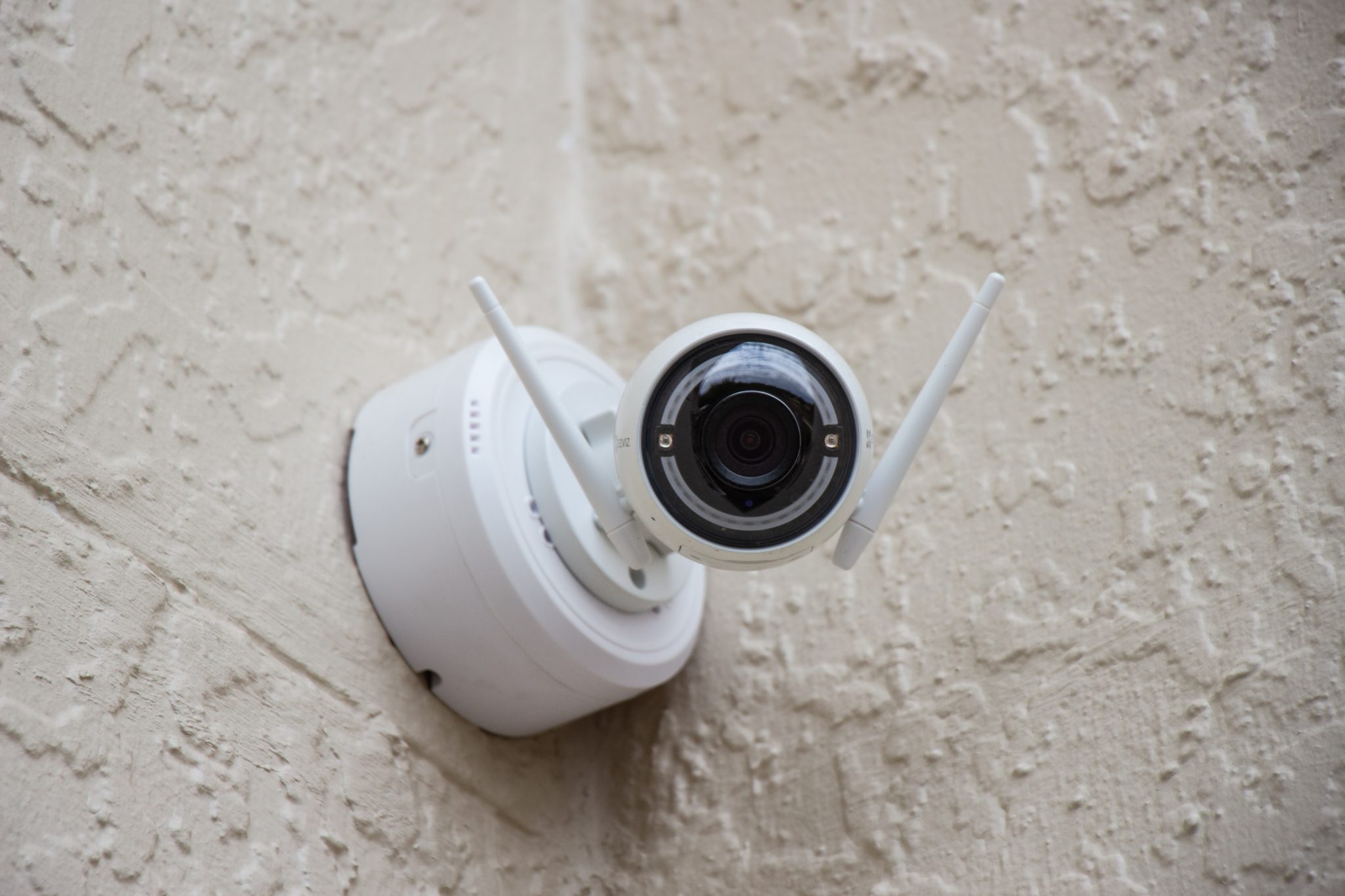 Spring Equipment Theft
Spring Equipment Theft
Each spring, as the demand for landscape services swings into high gear, equipment theft escalates. Several members of the Georgia Green Industry Association and the Georgia Urban Ag Council report having their businesses hit with equipment theft. Criminals are stealing equipment in storage and on the job.
Here are some general equipment theft prevention strategies to consider:
- Train employees on company procedures to deter equipment theft. In addition, discuss what to do in the event of a theft or robbery.
- Take inventory: Establish routine equipment inventory. Keep documentation and photo records of serial numbers and models.
- Parking strategy: Be strategic about where you park your vehicle on each jobsite or lunch destination. Park in well lighted locations visible to the work crew and avoid leaving equipment unattended in back lots or hidden areas that are conducive to theft. Position trailers so they aren’t easily accessed or swapped to another vehicle.
- Reposition vehicles on large properties: Avoid leaving trucks far away from workers on large properties and keep trucks close.
- Deterrents: Lock vehicles, trailers, trailer tongues, and secure equipment when unattended. Don’t leave keys in trucks or commercial mowers.
- Security Cameras: If site has security cameras park where equipment can be seen by cameras. Install security cameras and sensor beams on storage areas.
- Tracking Devices: Install tracking devices on large equipment.
- Be Alert: Pay attention to suspicious activity.
- Insurance: Review your policy and ask your insurance provider about theft prevention.
- Communicate with local law enforcement about landscape equipment theft or suspicious activity in your area.
Professional organizations play an important role in helping to find solutions to the issues of equipment theft at worksites, offices, and storage facilities. Supporting these entities through membership and communication strengthens industry efforts to combat crime. The Georgia Urban Ag Council maintains a Twitter account titled “GA Landscape Thefts” to compile information, articles, and reports from owners and residents experiencing equipment theft. Armed with this data, the UAC hopes to assist law enforcement agencies, equipment manufacturers, and suppliers in determining a course of action to reduce losses.
Landscape Alerts & Updates | February 2019
Diseases and Problems to Watch for in Winter and Early Spring
Guest Post by Alfredo Martinez
Microdochium Patch in Golf Courses. When night temps dip below 50°F, Microdochium Patch (Fusarium Patch, pink snow mold) can be severe on new bentgrass and semi-dormant bermudagrass greens, and on greens overseeeded with Poa trivialis. Patches begin as small reddish-brown spots that can grow and coalesce into large blighted areas. White to pink mycelium (sometimes mistaken for Pythium or dollar spot) may appear during extended periods of rain and overcast weather. Cultural controls are the same as those listed above for Yellow Patch. Effective fungicides include products that contain azoxystrobin, fluoxastrobin, iprodione, metconazole, propiconazole, pyraclostrobin, thiophanate-methyl, triadimefon, trifloxystrobin, triticonazole or vinclozolin.
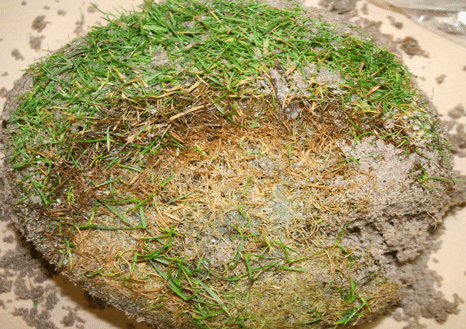
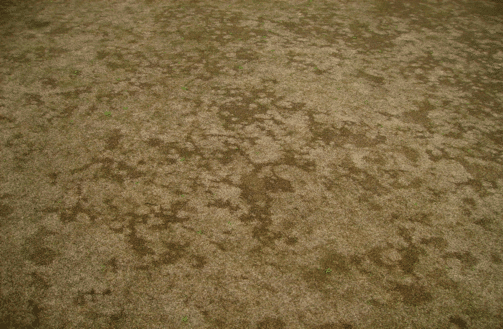
Slime Mold/Sooty Mold;Blackening observed in fully dormant zoysia and or bermudagrass after few rain events? We have received samples exhibiting olive green, gray to black molding affecting dormant tissue This condition is known as slime mold and /or “sooty mold” in other crops. The growth is superficial in nature. While the symptoms are worrisome, the condition does not affect turf further. Sooty mold is the result of secondary, saprophytic fungi and not considered a true disease. Sooty mold develops on dormant, senescing and/or damaged turf when prolonged wet, humid weather occurs. This symptomatology is probably going to go away as sunny, breeze weather resumes. This blackening should mow off rather quickly.
Yellow Patch (Rhizoctonia cerealis).Sporadic infections of R. cerealis(yellow patch) have been observed in ryegrass over-seeded bermudagrass turf swards and sport fields. The disease is rare in the state, but it thrives in extended periods of wet, cloudy weather. It is a cool-temperature disease (50 to 65°F). Disease development is significantly suppressed at temperatures lower than 45°F and greater than 75°F. Avoid excessive nitrogen fertilization in the fall or when the disease is present. Thatch management is essential for disease control. Maintain thatch at less than 0.5 inch. There are several fungicides that can be used to control the disease, however in the state, yellow patch usually does not warrant a fungicide application.
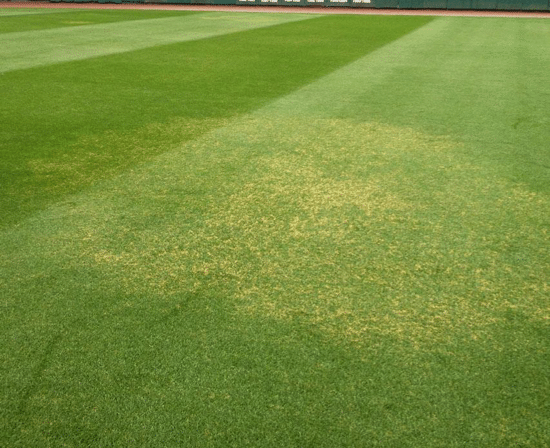
Dollar Spot Can Start Early: The dollar spot fungus (Sclerotinia homoeocarpanow named Clarireediasp) can produce infections on warm season grass as soon as they start to green up. Additionally, dollar spot can continue to infect cool season grasses anytime temps are above 50°F but it is fully active between 60°F and 70°F. Due to low temperatures, recovery of turf from dollar spot symptoms in late winter or early spring may take weeks rather than days. Therefore, preventive control of dollar spot is important at this time of the year. Monitoring fertility is an important first step to controlling dollar spot. Excessive moisture on turfgrass foliage will promote dollar spot epidemics. Excessive thatch layers and compacted soil stresses the plants and slows turfgrass growth and recovery from disease.
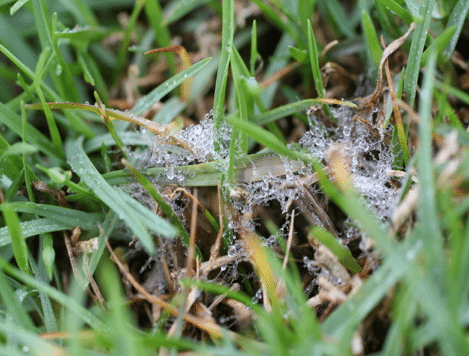
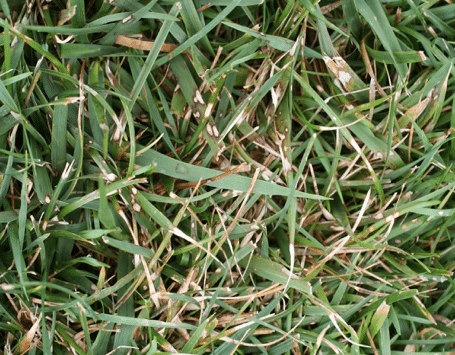
Chemical control for practitioners: A variety of fungicides are available to professional turfgrass managers for dollar spot control including fungicides containing benzimidazoles, demethylation inhibitors (DMI), carboximides, dicarboximides, dithiocarbamates, nitriles and dinitro-aniline. Several biological fungicides are now labeled for dollar spot control. For a complete and updated list of fungicides available for dollar spot, visit http://extension.uga.edu/publications/detail.cfm?number=SB28
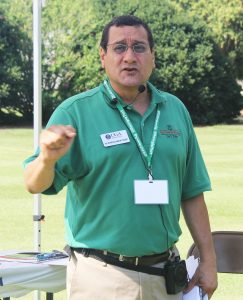 |
Alfredo Martinez is a University of Georgia Professor and Extension Plant Pathologist in the areas of turfgrass, small grains, and non-legume forages at the Griffin campus. |
Tiny Topics – Garden Tools
For our next post on “tiny topics” I want to visit the topic of garden tools. It is easy to take our tools for granted. I have visited gardens where trowels and shovels are just left in the elements. They rust, become lost in garden debris, and blades become dull. Take some time during this slow garden season to evaluate, repair and clean your tools. Stocking the Garden Shed is a wonderful publication if you need guidance on adding to your tool shed.
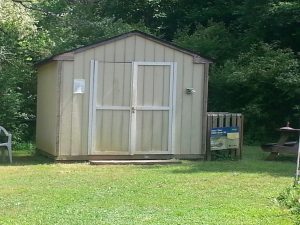
It may be surprising to discover that how you use your garden tools can have an impact on disease management in the garden:
#1 Making improper pruning cuts or using a dull blade can damage plants and open up pathways for disease-causing organisms to enter your plant. Be diligent in your pruning skills and do not damage your plant. I have seen old pruners actually rip the bark off of a fruit tree because the cut wasn’t crisp. Keep those blades sharp.
#2 Using a tool on a diseased plant and then using that tool on another plant can spread disease, even if that tool is left for several days between uses. Bacteria, viruses, and fungal pathogens are easily moved and in part that count on that for survival. Fungal pathogens can produce structures called survival spores which can be viable for a long period of time. If you make a cut with pruners on a diseased plant or use a shovel to clean up diseased plant debris you could be unknowing transporting some of these spores to a clean, disease free plant.
It is worthwhile to disinfect your tools. Using a cleaning solution of 1 part bleach to 9 parts water is a recommended ratio for proper disinfection. You will find that getting into the routine of proper tool cleaning will be another piece of the puzzle in your integrated pest management system.
Happy Gardening!
Get timely landscape info and training delivered to you; join the Green List.
Categories
- Announcement (3)
- Articles (250)
- Charity (1)
- Community and School Gardening in Georgia (262)
- Community Gardening (174)
- Diseases (10)
- Fruits (14)
- Insects (57)
- Pollinators (15)
- School Gardening (112)
- Urban Agriculture (189)
- Urban Gardening (175)
- Vegetables (92)
- garden diseases; plant disease; vegetable disease (2)
- Green Industry (1)
- Landscape Alerts (215)
- Annual Flowers (11)
- Business Issues (7)
- Design and Installation (5)
- Fertilization (5)
- Integrated Pest Management (24)
- Invasive Pests (5)
- Lawns and Turf (64)
- Maintenance (10)
- Native Plants (1)
- Perennial Flowers (9)
- Plant Diseases (32)
- Pollinators (2)
- Pruning (4)
- Shrubs (16)
- Training and Events (21)
- Trees (30)
- Water (8)
- Weather (8)
- Weed Control (31)
- Oral History (3)
- Fairmont History (1)
- Retired Faculty (1)
- UGA Griffin (1)
- Pest Control Alerts (166)
- Ants (10)
- Bed bugs (2)
- Biological Insect Control (6)
- Biting Pests (12)
- Certification (12)
- Insect Related Diseases (17)
- Integrated Pest Management (21)
- Mosquitoes (23)
- Nuisance Pests (16)
- Pesticide Application (48)
- Quizes (20)
- Spiders (3)
- Stinging Pests (11)
- Stored Food Pests (2)
- Termites (5)
- Ticks (2)
- Training (13)
- Weather (24)
- Wildlife Management (1)
- Pizza Farm (1)
- Pollinators (2)
- Saw Safety (31)
- Training (5)
- Uncategorized (33)
Archives
- June 2024
- May 2024
- July 2023
- September 2022
- July 2022
- February 2022
- June 2021
- May 2021
- March 2021
- February 2021
- January 2021
- October 2020
- August 2020
- July 2020
- May 2020
- April 2020
- February 2020
- November 2019
- October 2019
- September 2019
- August 2019
- July 2019
- June 2019
- May 2019
- April 2019
- March 2019
- February 2019
- January 2019
- December 2018
- November 2018
- October 2018
- September 2018
- August 2018
- July 2018
- June 2018
- May 2018
- April 2018
- March 2018
- February 2018
- January 2018
- December 2017
- November 2017
- October 2017
- September 2017
- August 2017
- July 2017
- June 2017
- May 2017
- April 2017
- March 2017
- February 2017
- January 2017
- December 2016
- November 2016
- October 2016
- September 2016
- August 2016
- July 2016
- June 2016
- May 2016
- April 2016
- March 2016
- February 2016
- January 2016
- December 2015
- November 2015
- October 2015
- September 2015
- August 2015
- July 2015
- June 2015
- May 2015
- April 2015
- March 2015
- February 2015
- January 2015
- December 2014
- November 2014
- October 2014
- September 2014
- August 2014
- July 2014
- June 2014
- May 2014
- April 2014
- March 2014
- February 2014
- January 2014
- December 2013
- November 2013
- October 2013
- September 2013
- August 2013
- July 2013
- June 2013
- May 2013
- April 2013
- January 2013
- October 2010


